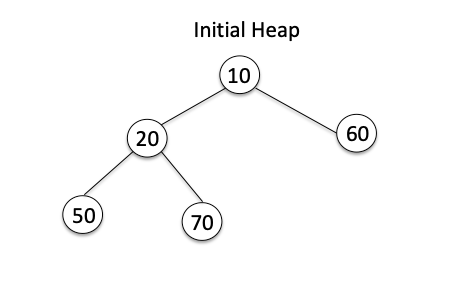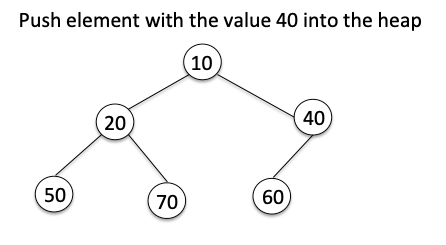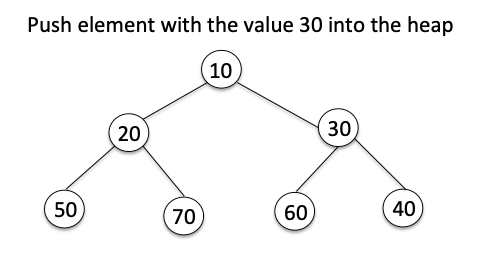Overview:
- A min heap is a binary tree in which the parent nodes hold smaller values than that of the children.
- As new elements get added into the heap, the “heap” property stated above is maintained.
- The heapq module in Python provides a set of functions to create and manipulate min heaps.
- The heappush() method pushes an element into an existing heap in such a way that the heap property is maintained.
Example:
The Python example constructs a min heap through heapify() function and subsequently calls heappush() twice to add two elements into the heap, while maintaining the heap property.
|
# Example Python program that pushes elements into a heap # while maintaining the heap property import heapq
# Data as a Python list heapData = [10, 50, 60, 20, 70]
# Make the Python list into a heap heapq.heapify(heapData) print("Heap:")
# Print the heap print(heapData)
# Push new elements into the heap heapq.heappush(heapData, 40) print(heapData)
heapq.heappush(heapData, 30) print(heapData) |
Output:
|
Heap: [10, 20, 60, 50, 70] [10, 20, 40, 50, 70, 60] [10, 20, 30, 50, 70, 60, 40] |


